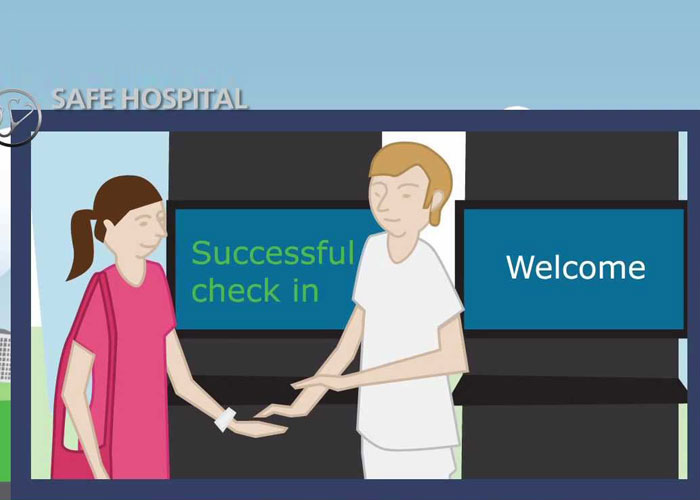It is the demand of time to receiving sophisticated and prompt medical attention after an injury or a medical problem occurs, anytime and anywhere in the country, without traveling great distances. Such expectations are even greater during mass emergencies that require immediate care for a large number of casualties. In circumstances in which hospital operations are disrupted or completely disabled, the adverse effects of such disasters can be quickly compounded, frequently with catastrophic results. Often disaster pushes most critical health care delivery systems to their limits. Therefore, the importance of uninterrupted hospital operations and ready access to, and availability of, immediate medical care cannot be exaggerated.
It is important to follow the respective country code and guidelines for planning, design, and construction of new hospitals and rehabilitation of existing ones, for the purpose of improving their performance during, and in the immediate aftermath of, seismic, flooding, and cyclone events. Different natural phenomena present different challenges, and each hazard requires a different approach and a different set of recommendations. For instance, flooding is a more site-specific hazard than others. The protection against seismic forces requires that both structural and non-structural building components have sufficient resistance. For high winds, protection efforts focus mainly on the exposed building components and systems.
Typically, the design of hospital facilities is driven by their function and the type of services they provide to the community. In order to design effective medical facilities for the future, designers must be familiar with the latest developments, building requirements and the latest research findings on the impact of building designs on hospital operations, staff and patient morale, and patient care.
HEALTH CARE
Ambulatory Care
The emphasis on the ambulatory care had a profound effect on the healthcare sector, leading to the reduction in the number of hospital beds because of the reduced demand for overnight stays. Insufficient ambulatory care has diminished the capacity of medical facilities to care for the casualties in the event of a disaster. To make ambulatory care centers suitable for post-disaster emergency care following are necessary preconditions:
- They need to have dedicated emergency departments or adequate facilities and equipment to deal with trauma patients.
- They need available or staffed on a 24-hour, 7 days-a-week basis.
- They need adequately equipped with emergency communications systems.
- The staff should be experienced or well trained to care for the types of patients and injuries expected in post-disaster emergencies.
- The facilities should consider essential and need to build as standard as hospital following the building code which will makes them safe against any hazard.
Patient Volume
Hospital emergency rooms have become the primary source of medical care for millions of people. Unlike other medical facilities, hospitals are required to treat anyone who walks in, or is brought in, irrespective of their ability to pay. This trend puts an enormous pressure on emergency departments.
As a result, hospitals need enlarged and better equipped for emergency departments to accommodate the ever-increasing patient load, which has a positive influence on their capacity to deal with disaster-related emergencies. Additionally, hospital emergency departments need well trained in triage that involves prioritization of cases according to the level of medical urgency. Patients who are most in need of immediate treatment are treated first, while the others who can wait without harm are treated later. Emergency department staff members should also go through extensive disaster drills, and are well trained to respond to mass emergencies.
Aging Facilities
Renovation and replacement of health facilities is a must. A majority of hospital buildings throughout the country are of considerable age. Some of them were built even before 1900s. Some of the existing hospitals are now at the end of their useful life even if we do not consider the earthquake induced load.
HAZARD MITIGATION
Mitigation is defined as any sustained action taken to reduce or eliminate long-term risk to life and property from hazard events. The goal is to save lives and reduce property damage in ways that are cost-effective and environmentally sound. Hazard mitigation measures should be integrated into the process of planning and design because they reduce casualties and damage resulting from building failures during hazard events. The effects of a disaster on a hospital, however, are never restricted to the physical damage or the distress among the staff and patients as a result of such damage. Consequences frequently include partial or total loss of the ability to provide services and meet the demand for health care when it is most needed. Incorporating mitigation measures in the design of hospitals is therefore especially important because they minimize the disruption of hospital operations and protect the uninterrupted provision of critical health services.
Advances in building science and technology, and changes in design philosophy and quality assurance techniques for the construction and maintenance of medical infrastructure, now make it possible to limit the damage during seismic, flooding, and cyclone events. However, it is not always possible to achieve the protection levels one might desire, owing to a variety of factors. Natural or technical barriers may exist, or the funding may be insufficient. Even though financial resources may be limited, and other circumstances may impose technical barriers to the fulfillment of performance objectives, a detailed assessment is still required in order to ensure the optimal utilization of available resources.
Assessing Risk
Beyond the building codes in existence at the time a hospital is designed or slated for renovation, the leadership of the facility and the design consultants must address key questions to establish the adequacy of the building’s performance in the event of a disaster. Hospitals are under enormous financial pressure. Any funds invested in making a hospital facility safer for patients and staff, more resistant to damage, or capable of continued operations in a post-disaster situation must consider the following questions:
- What types and magnitudes of hazard events are anticipated at the site?
- What are the vulnerabilities of the site or existing building to natural hazards?
- What are the anticipated frequencies of hazard events?
- What level of loss/damage/injury/death, if any, is acceptable?
- What might be the financial impact of extended downtime on the institution?
- What is the impact to the community if the hospital cannot maintain operations in the aftermath of a disaster?
It is not possible to protect against every conceivable event, or to be 100 percent safe and free of damage in a major disaster. The level of acceptable risk must be decided on an individual facility basis by those responsible for the institution and its mission.
Potential Vulnerabilities
Hospitals provide services that are essential for protecting and safeguarding the health and well-being of a community. The continued provision of these services is even more critical during and in the immediate aftermath of disasters. Considering the complexity of hospital operations, even the smallest breakdown in one of its building or equipment systems can cause serious disruption of hospital functions. This makes the hospitals extremely vulnerable to a variety of natural hazards.
Hospitals usually have high levels of occupancy, with patients, staff, and many visitors present 24 hours a day. Many patients require constant attention, and in many cases continuous specialized care and the use of sophisticated medical instruments or other equipment. Hospital operations also depend on a steady supply of medical and other types of material, as well as public services or lifelines.
Given the importance of hospital services for response and recovery following emergencies, and the need for uninterrupted operation of these facilities, hospital administrators and designers must consider all aspects of their vulnerability. Three main aspects of hospital vulnerability must be taken into account:
- Structural
- Nonstructural
- Organizational
Structural vulnerability is related to potential damage to structural components of a building. They include foundations, bearing walls, columns and beams, staircases, floors and roof decks, or other types of structural components that help support the building. The level of vulnerability of these components depends on the following factors:
- The level to which the design of the structural system has addressed the hazard forces
- The quality of building materials, construction, and maintenance
- The architectural and structural form or configuration of a building
The aspects of adequate design and construction in most hazard-prone areas are regulated by building codes and other regulations. The main purpose of these regulations is to protect the safety of occupants. They are usually prescriptive in nature, i.e. they establish minimum requirements that are occasionally updated based on newly acquired knowledge. The building regulations alone, however, cannot guarantee uninterrupted operation of a hospital, because a great many other factors affect hospital functions.
Nonstructural Vulnerability:The experience of hospital evacuations and other types of disruption during a hazard event increases the awareness that hospital functions could be seriously impaired or interrupted, even when the facilities did not sustain significant structural damage. The effects of damage to nonstructural building components and equipment, as well as the effects of breakdowns in public services (lifelines), transportation, re-supply, or other organizational aspects of hospital operations, can be as disruptive, and as dangerous for the safety of patients, as any structural damage.
Architectural Components:Nonstructural vulnerabilities that can affect hospital functions and the safety of occupants include the potential failures of architectural components, both on the exterior and the interior of buildings.
Damage to roof coverings, facades, or windows can make way for water penetration that can damage sensitive equipment and shut down many hospital functions. When roofing material is disturbed by wind, the roof may start to leak and the moisture can knock out vital equipment, disrupt patient care, and penetrate walls and other concealed spaces, allowing mold to build up over time. Window breakage resulting from high winds, earthquakes, and even flooding frequently requires patient evacuation from affected areas. Patients in critical care and acute care units are particularly vulnerable because the move separates them from medical gas outlets, monitors, lighting, and other essential support services.
Non-load bearing and partition walls and ceilings, for instance, are rarely designed and constructed to the same standards of hazard resistance as the structural elements. Collapse of these components has caused a number of evacuations and closures of hospitals following a hazard event.
InstallationsHospitals are extremely complex building systems that depend on an extensive network of mechanical, electrical, and piping installations. The air and ventilation system is one of the most important ones because it is responsible for maintaining an appropriate environment in different parts of the hospital. Isolation rooms usually have negative pressure so that harmful airborne organisms do not migrate outside the patient’s room and infect others. Likewise, wards housing patients with immune system deficiencies require a positive pressure differential, so that harmful organisms do not enter the patient room and needlessly infect them. The malfunction in any one part of this ventilation system could create a risk of infection to patients and staff. This system is extremely vulnerable to disruption as a result of indirect building damage.
In floods and earthquakes particularly, sewers are apt to overflow, back up, or break down. Waste disposal is essential for any hospital, because when the toilets back up, or sterilizers, dishwashers, and other automated cleaning equipment cannot be discharged, patient care is immediately affected. Retention ponds or holding tanks coupled with backflow and diversion valves can be employed to solve this problem.
Elevator service is vulnerable not only to power outage, but also to direct damage to elevator installations. In the event of an earthquake, elevator shafts and other equipment can be damaged or dislodged, effectively shutting down the building. Flooding of elevator pits may be a common problem during urban flood and will be responsible for shut down elevator service.
The emergency power supply system is probably the most critical element in this group. Together with fuel supply and storage facilities, this system enables all the other hospital installations and equipment that have not sustained direct physical damage to function normally in any disaster. However, uninterrupted operation of a hospital during a power outage is possible only if adequate electrical wiring is installed in all the areas that require uninterrupted power supply. Since extra wiring and additional circuits for emergency power increase the initial construction costs of the building, the decision on the emergency power coverage requires a thorough evaluation of the relative vulnerability of various functions to power outage. As patients become more critically ill and the nature of diagnosis and treatment becomes more dependent on computers, monitors, and other electrical equipment, the need for emergency power will continue to grow.
Equipment and Furnishings
There are many types of internal hazards that might occur as the result of a disaster. There are incidences that bottles in clinical laboratories have fallen and started fires. Earthquakes have makes open file cabinet drawers and ventilators across rooms at high speed, with the potential of causing considerable injury to personnel. Any wheeled equipment is vulnerable to displacement and has the potential to cause injury.
Electronic communication systems
Hospitals use and depend on many types of communication systems. For communications with emergency vehicles or first response agencies, hospitals depend on radio equipment that is frequently mounted on roofs and exposed to high winds and wind borne debris impact. Satellite dishes, communication masts, antennae, and other equipment can be blown off the roof or be severely damaged, leaving the hospital without this vital service at a critical time.
Evacuation: Evacuation of patients is a measure of last resort, but occasionally necessary, especially in extreme situations. Many different conditions or vulnerabilities mentioned above can cause the evacuation of a hospital, but the process of evacuation itself can also be vulnerable to disruption that can seriously aggravate the health and safety of patients. Frequently, a flood, earthquake, or a windstorm can cause blockage of access roads, cut ting off a hospital from normal evacuation routes. Surface escape routes may go under water and unusable and even air evacuation may impaired because of helicopter landing ground may also go under water.
HOSPITAL DESIGN AND CONSTRUCTION
Permanent high occupancy and the need for uninterrupted operation are the most important characteristics of hospital facilities. They determine most of the building design requirements and pose the greatest challenge in the design of mitigation measures. Contemporary hospitals must accommodate both critically ill patients and a high volume of ambulatory patients. Length of stay for inpatients may be as short as one day, but usually averages around 5 to 6 days in most hospitals. Acute care patients often have visitors on a daily basis, while emergency departments are routinely crowded with patients and their families, particularly at peak times during the day.
Since the development of effective ventilation systems, most hospitals were designed as “thick” buildings, where many areas do not have natural light and depend on mechanical ventilation to be usable. Generally, the larger the hospital, the more functions and areas depend on mechanical ventilation and artificial light. This is another important aspect of hospital vulnerability in situations where normal power supply is disrupted.
Hospitals usually do not occupy just one building. In most cases a hospital is located on campus that comprises a number of different buildings, each housing a separate function. In addition to an acute care hospital, which might be composed of several wings of varying ages, there might also be a separate power plant, medical office building, ambulatory surgery and procedures building, behavioral health building, fitness center, dialysis center, or cancer center. Since all of these buildings have a different type and level of occupancy, from the perspective of patient safety and that of uninterrupted hospital operations, they do not need the same level of disaster-resistant construction.
Building Codes
Building codes address minimum requirements for building resistance to major hazards based on historical experience. Recent disaster experience in many countries, however, indicates that current code requirements are not always adequate, especially not for essential facilities such as hospitals. To make things worse, many existing hospitals were built to older codes that frequently did not have any provisions for protection against natural hazards.
Most essential facilities require special attention, in addition to compliance with building code requirements, in order to be able to sustain their operations after a major disaster. Some countries, for example, have amended their codes to address the need for adequate protection of hospitals and other critical facilities from prevailing local hazards. Country should adopt legislation for seismic design based on the principle that hospitals should be able to function at least at a basic level after an earthquake or cyclone of moderate to large magnitude. Design Guide should support the trend toward performance-based codes for design and construction of hospitals.
MULTI-HAZARD DESIGN CONSIDERATIONS
Multi-hazard design is an approach that aims to integrate risk reduction with the building design process, rather than pursuing a traditional tendency towards fragmented risk reduction efforts.
Many building locations are vulnerable to more than one hazard, requiring the application of appropriate design solutions that would mitigate each relevant hazard.
Of the many hazards that can endanger a hospital and impair the services it provides to a community, fire is the most prevalent. Every hospital is at risk from fire, which makes this hazard much more pervasive than any of the natural hazards noted above. However, fire protection measures have been present in building codes, in the form of approved materials, fire-resistant assemblies, exiting requirements, the minimum number and capacity of emergency exit routes, and many other specifications. However, the mitigation measures used to protect the buildings against high winds, floods, and earthquakes may interact favorably or unfavorably with the need for fire protection.
Multi-Hazard Design Matrix
The Multi-hazard Design System Interaction Matrix highlights the interaction between a particular hazard and a building design component or system. For each entry the matrix provides a description; positive, negative, or neutral characterization of the interaction; and an explanation of the nature of interaction.
In order to facilitate comparison between hazards, the following convention has been used in Table below:| √ | Indicates a desirable condition or beneficial interaction between the designated component/system and a given hazard |
| × | Indicates an undesirable condition or the increased vulnerability of a designated component/system to a given hazard |
| 0 | Indicates little or no significant interaction between the designated component/system and a given hazard |
| Site and Building Characteristics | THE HAZARDS | Explanation of Interaction | |||
| Seismic | Flood | Wind | Fire | ||
| 1. SITE | |||||
| 1A. Site-specific and building specific all-hazard analysis. | √ | √ | √ | √ | Beneficial for all hazards. |
| 1B. Two or more means of access to the site | √ | √ | √ | √ | Beneficial for all hazards. |
| 1C. Site modification to elevate building on engineered fill. | × | √ | 0 | 0 | Highly beneficial for flood, needs very careful site engineering for earthquakes. Not significant for fire. Probably not significant for wind but depends on topography. |
| 2. ARCHITECTURAL | |||||
| 2A. CONFIGURATION | |||||
| 2A-1Re-entrant corner plan forms | × | 0 | × | 0 | May cause stress concentrations and torsional forces in earthquakes, and contribute to localized high-wind pressures. |
| 2A-2Enclosed courtyard plan forms | × | 0 | 0 | 0 | May cause stress concentrations and torsional forces in earthquakes. |
| 2A-3Very irregular three-dimensional building forms | × | 0 | × | × | May create indirect load paths, stress concentrations, and torsional forces in earthquakes. May contribute to localized high wind pressures, and aggravate evacuation during fire emergencies. |
| 2A-4Large roof overhangs | × | 0 | × | 0 | Vulnerable to vertical earthquake and wind forces, needs careful engineering. |
| 2B. CEILINGS | |||||
| 2B-1 Hung ceilings | √ | 0 | 0 | √ | If properly attached to structural components using diagonal braces, reduce damage from earthquakes. |
| 2C. PARTITIONS | |||||
| 2C-1Unreinforced CMU or hollow clay tile, used as partitions or infill between structural framing | × | × | × | √ | High vulnerability to seismic and wind forces, but desirable against fire if not in seismic zone. If exposed, vulnerable to flood forces. |
| 2C-2Non-rigid (ductile) connections for attachment of interior non-load-bearing walls to structures including extra-high and -heavy gypsum board walls | √ | 0 | 0 | × | Beneficial for earthquakes but gaps between components may threaten fire resistance. Not significant for flood and wind. |
| 2C-3Gypsum wall board partitions | √ | × | 0 | √ | Gypsum partitions properly braced to structure beneficial in seismic zones. Susceptible to flood damage, but good for fire if proper resistance is specified. Not significant for wind. |
| 2D. OTHER ELEMENTS | |||||
| 2D-1 Tile roofs | × | 0 | × | √ | Undesirable in seismic zones unless properly attached. On light structures, may cause poor seismic response. Good fire protection against external fire (wildfires) but undesirable in hurricane- and tornado-prone regions. |
| 2D-2 Parapets | √ | 0 | 0 | √ | Properly engineered parapet beneficial in seismic zones, but unbraced URM very dangerous in earthquake and wind. High parapets (>3 ft.) beneficial for wind. May assist in reducing fire spread to adjacent buildings. |
| 3. STRUCTURAL SYSTEM | |||||
| 3-1Base isolation and/or energy dissipating dampers | √ | × | 0 | 0 | Beneficial for earthquake, but base isolation in basement should be dry floodproofed to reduce vulnerability to flood damage. Not significant for wind and fire. |
| 3-2Wood frame structure, used for small hospitals and ancillary and service buildings | √ | × | 0 | 0 | Light weight beneficial in seismic zones provided adequate connections and shear walls are used.Lightness and lack of moisture resistance a disadvantage in floods. |
| 3-3Heavy structure with concrete floors, reinforced concrete moment frame, or frame with reinforced concrete or masonry shear walls. | √ | √ | √ | √ | Although weight increases seismic forces it is not a design problem. Requires special non-ductile detailing for large building frames. Generally beneficial for all other hazards. |
| 3-4Reinforced concrete or reinforced CMU structural walls with concrete floors and roof deck | √ | √ | √ | √ | Very beneficial for wind, good performance for earthquake, flood, and fire when correctly designed and constructed. |
| 3-5Steel structural frame | √ | √ | √ | × | Lighter than concrete, needs properly detailed moment frame, steel braces, or shear walls in seismic and high-wind zones. Good in flood with proper detailing, especially for elevated structure. Vulnerable to fire. |
| 3-6Unreinforced masonry load-bearing walls | |||||








